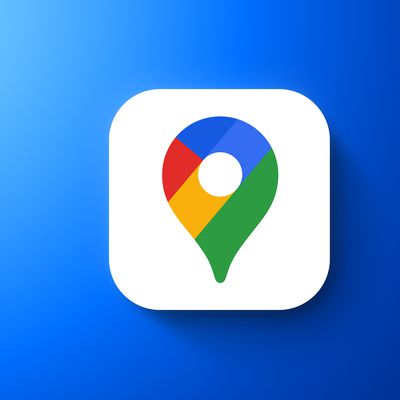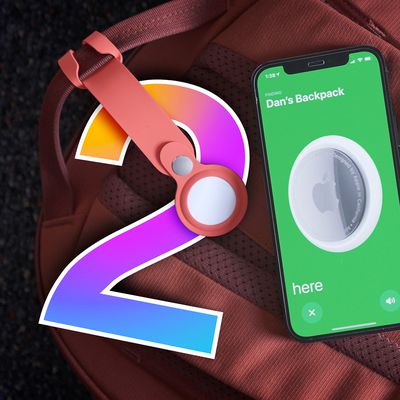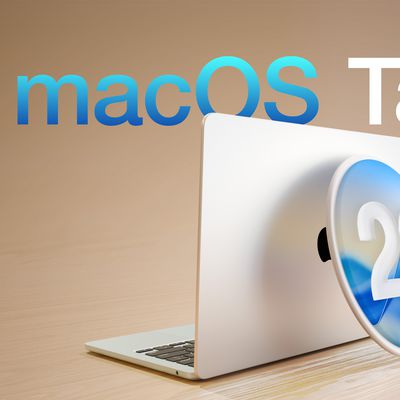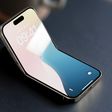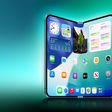Last-Minute Leaks
Noted leaker Evan Blass has shared full sets of images of what he says as the actual iPhone 12 and iPhone 12 mini lineups in five colors.

Blass has also shared the iPhone 12 Pro and iPhone 12 Pro Max lineups in four colors.

Finally, Blass has shared images of the HomePod mini in black and white with a more spherical design than its larger sibling.
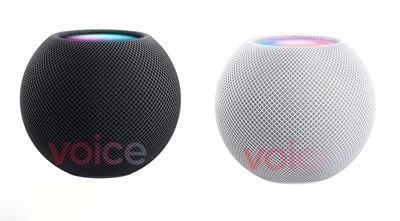
Our original What to Expect guide continues below.
Apple's second fall 2020 event, "Hi, Speed," is set to be held on Tuesday, October 13. Apple already held an event in September, but it was focused on the iPad Air and the Apple Watch rather than iPhones as usual.
October's event is expected to be much more exciting, because it will see Apple unveil the much-anticipated iPhone 12 lineup with some of the biggest changes we've seen to the iPhone in years, including a redesign. Rumors suggest we could maybe see other long-awaited products such as the AirTags, smaller and more affordable HomePod, AirPods Studio over-ear headphones, and perhaps even an Apple Silicon Mac.
We've rounded up everything we know about the products that Apple might announce at the event so you know what to expect on Tuesday. Note that the images below are mockups of what we're expecting based on rumors and leaks, unless otherwise stated.
The iPhone 12 Lineup
There will be four iPhones in three different sizes in 2020, with some of the most radical changes that we've seen to iPhone design since the iPhone 6 launched in 2014. There will be two lower-cost affordable iPhones that will be similar to the iPhone 11, and two higher-priced Pro models.
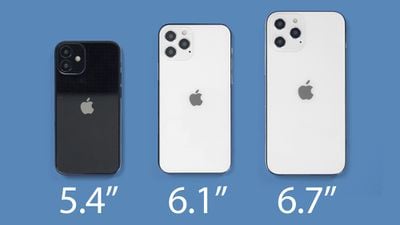
The lower-cost iPhones will be available in 5.4 and 6.1-inch sizes, while the more expensive models will be available in 6.1 and 6.7-inch sizes. The smallest iPhone, which rumors suggest could be called the "iPhone 12 mini," will be the smallest iPhone that Apple has introduced since the 2016 iPhone SE and it will appeal to those who have been desiring a smaller iPhone.
The 6.7-inch iPhone will be the biggest iPhone that's been released to date, while the 6.1-inch models will fall in the middle.

All four of the new iPhones will feature edge-to-edge displays with notches for the Face ID camera equipment, and while there were some early rumors that the iPhone 12 lineup would have a smaller notch, later renderings, schematic leaks, and components have suggested that's not the case. The notch is going to be the same size with the exception of the 5.4-inch iPhone, which seems to have a slightly smaller notch to match its smaller size.
In the past, the more affordable iPhones have had LCDs, but this year, Apple is going for an all OLED lineup for the first time, introducing "Super Retina XDR" displays. All of the new iPhones will have the same display quality and LCD vs. OLED will no longer be a differentiating factor. Apple is also supposedly using a new hardened "Ceramic Shield" glass screen that will perhaps be more resistant to scratches and damage from drops.
There were rumors that Apple would introduce a 120Hz "ProMotion" refresh rate in the iPhone 12 models, but it doesn't sound like that's going to happen this year. There have been persistent rumors about ProMotion technology coming to the iPhone since it was introduced in the iPad Pro, but we may need to wait until next year.
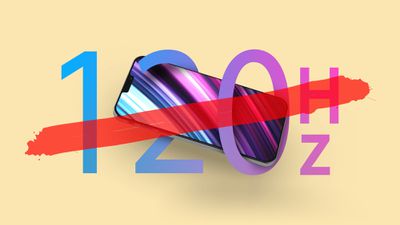
Apple supposedly needs to adopt LTPO display technology to deal with the battery drain of a faster refresh rate, and that's not happening in the iPhone 12 models.
When it comes to the chassis, that's where we're going to see some of the most major design changes. Rather than the smooth, rounded edge design we've had since the iPhone 6, this year's iPhone models are going to have a flat-edge frame that's similar to the iPhone 4 or the iPad Pro. In fact, the iPhone 12 models will look like mini iPad Pros, adopting that design language.
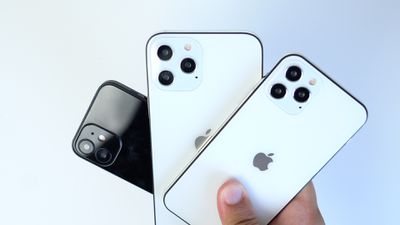
The Pro models will have a stainless steel frame while the more affordable models will have an aluminum frame, and all models will have glass fronts and backs. Pro models will likely come in the standard silver, gold, and graphite (in lieu of space gray), but there will also be a blue shade that may match the blue introduced in the Apple Watch Series 6.
As for the more affordable models, there's a good chance we'll see iPhone 11-style color options and rumored colors include black, white, red, blue, and green.

The iPhone 12 Pro models will have three camera setups, and at least one of the Pro models will feature a LiDAR Scanner like the iPad Pro, though it's possible that both models will have LiDAR sensors. LiDAR Scanners will bring new AR capabilities, but also could bring upgrades to portrait mode, night mode, low light capabilities, and more.
The iPhone 12 Pro models could also feature an improved telephoto lens with better optical zoom and improved Smart HDR for better low-light performance. Sensor-shift image stabilization, which adds stabilization at the camera level instead of the lens level, may bring image stabilization to the ultra wide-angle lens along with improved performance in poor lighting conditions. Rumors also suggest the Pro models might be able to shoot 4K video at 120 and 240 frames per second, and that the iPhone 12 Pro Max will have the best camera of the bunch with a 47 percent larger sensor than the sensor in the iPhone 12 Pro and an "Expansive" capability for the super wide-angle lens.

The non-Pro iPhone 12 models will have dual-lens camera setups and no LiDAR Scanner to keep costs lower, but we should still see some improvements in camera technology. As with last year's model, we can expect the standard models to have a wide-angle lens and an ultra wide-angle lens, while the Pro models will get those two lenses and a telephoto lens.
Another major change in this year's iPhone is the introduction of 5G, and all of the iPhone 12 models will use 5G modems sourced from Qualcomm. While all of the 2020 iPhones will have 5G, there are two kinds of 5G, and the iPhone 12 Pro models may be the only ones that will support the fastest 5G, mmWave 5G. The other possibility is that 5G will be implemented by country, and one rumor says that only the U.S. iPhone 12 models will support the fastest mmWave 5G.

mmWave 5G is short range and will be available in cities and urban areas, while Sub-6GHz 5G is slower than mmWave but longer range and more appropriate for use in suburbs and rural areas. For more on the differences between Sub-6GHz and mmWave 5G, check out our 5G guide. Apple is said to be adding a "Smart Data Mode" to the iPhone 12 models that's designed to swap between 4G and 5G to preserve battery life as needed, as 5G will drain more battery.
All of this year's iPhones will have a faster, more efficient 5-nanometer A14 chip that brings performance and efficiency improvements for speedier operation and perhaps longer battery life to compensate for the extra drain of a 5G modem. When it comes to RAM, the Pro models are expected to get 6GB RAM while the standard models could have 4GB RAM.

Apple put the A14 chip in the iPad Air too and benchmarks have already leaked, suggesting we'll see some good speed improvements compared to the A13 chip. The A14 earned a single-core score of 1583 and a multi-core score of 4198. Comparatively, the A13 Bionic features an average single-core score of 1336 and a multi-core score of 3569.
Upgrading iPhones this year? This is how much faster an A14 #iPhone12 will be when upgrading from: • iPhone 6s / SE - 196% Faster
• iPhone 7 / Plus - 117% Faster
• iPhone 8 / Plus / X - 75% Faster
• iPhone XR / XS - 44% Faster
• iPhone SE (2020) / 11 / 11 Pro - 18% Faster — MacRumors.com (@MacRumors) October 8, 2020
5G hardware is expensive, so Apple is going to cut costs by eliminating the power adapter and EarPods that normally come with a new iPhone. These accessories will need to be purchased separately, but Apple does perhaps plan to ship the iPhone 12 models with a USB-C to Lightning cable that has a more durable braided design.
Storage on the standard iPhone 12 models is expected to start at 64GB with 128 and 256GB options available, while storage on the iPhone 12 Pro models is expected to start at 128GB with 256 and 512GB options available.
As for pricing, a leak that allegedly features full details for the iPhone 12 lineup suggests the iPhone 12 mini will be priced at $699, the iPhone 12 will be priced at $799, the iPhone 12 Pro will be priced at $999, and the iPhone 12 Pro Max will be priced at $1099.
While the new iPhones are all expected to debut in October, Apple is planning a staggered launch. The 6.1-inch iPhone 12 and 6.1-inch iPhone 12 Pro are expected to become available for preorder on October 16, with a launch date to follow on October 23.
Based on a last minute leak, the iPhone 12 mini will become available for pre-order on November 6, with a launch date to follow on November 13. The iPhone 12 Pro Max will launch the latest, with preorders to kick off on November 13 and a launch to follow on November 20.
For a more complete rundown on everything that we know about the upcoming iPhone 12 models complete with part leaks, renderings, schematics, and more, take a look at our iPhone 12 roundup.
Update: A new series of tweets from leakers fills in a few details about the iPhone 12 capabilities.
- Dynamic Zoning Algorithm - Allows for faster Face ID
- Improved Digital and Optical Zoom
- Night Mode for Telephoto sense
- One hour of battery life increase
Many of the changes appear to be related to the cameras on the new iPhone 12, which Apple typically does year over year. Faster Face ID and longer battery life should also be a welcome improvement.
Smaller HomePod
Apple is working on a new version of the HomePod, but it's not a second-generation version of the original model, it's a new, smaller and more affordable HomePod that will likely be sold alongside its larger sibling. It could be called the "HomePod mini."

The original HomePod has struggled due to its high price point in comparison to competing products like the Amazon Echo and Google Home, which is why Apple is aiming for something more compact, and more importantly, less expensive.
Not a whole lot has been said about the new HomePod, but it's expected to feature the same general HomePod form factor, just smaller, measuring in at 3.3 inches high (compared to the 6.8-inch size of the standard HomePod). With the smaller size, Apple will need to remove some of the internals, so the audio quality won't quite measure up to the larger model, and it will be powered by the S5 Apple Watch processor. Rumors suggest the HomePod mini will be priced at $99.
The new HomePod mini is expected to be available for purchase in November, perhaps November 16.
For more on the HomePod and the upcoming HomePod mini, check out our roundup.
Wireless Charging Mat
Apple killed the much-anticipated AirPower charging mat in March 2019, but behind the scenes, Apple engineers have continued working on some kind of Apple-designed wireless charging option.
Apple analyst Ming-Chi Kuo, who often provides accurate info about Apple's future plans, believes that Apple is working on a "small wireless charging mat." There haven't been other reliable rumors about the charging mat that's in development, but other sketchier sources have said that work on the AirPower is ongoing internally.
A last minute iPhone 12 leak said that Apple is going to introduce two wireless chargers called the "MagSafe Charger" and the "MagSafe Duo Charger," both able to output 15 watts. These two chargers will supposedly work with a new magnetic iPhone case that has "MagSafe," which may just be a word being used to describe magnets.
Leaked iPhone 12 components suggest there's a curious magnet ring inside of the devices, which could be designed to work with these wireless chargers, connecting them magnetically and holding them in place.
Other Possibilities
AirTags
Apple's long-rumored Tile competitor AirTags could be unveiled at the October event alongside new iPhones, but it's not guaranteed. In fact, a leak Friday morning unveiled everything that's going to be at the event, and the AirTags weren't mentioned.
Leaker Jon Prosser, who has a mixed track record, says the AirTags have been delayed and will not be at the event, with the accessories instead set to be unveiled in March 2021.
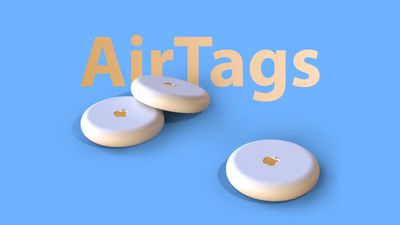
AirTags are small trackers that are equipped with Bluetooth and are designed to attach to important but easily lost items like wallets, cameras, and keys. AirTags (and the items they're attached to) can be tracked right inside the Find My app alongside iPhones, iPads, and Macs, so you can keep an eye on all of your important belongings in one place.
Info about AirTags has been leaking since the release of iOS 13, but we're still not sure what the AirTags will look like. Based on some simple images found in iOS, they could be small, circular tags with built-in Bluetooth and ultra-wideband support. Ultra-wideband, a feature first introduced in the iPhone 11 lineup, is key because iPhones that have a U1 chip will be able to track AirTags with much more accuracy than Bluetooth alone.
If your keys fall down the couch cushion or your wallet gets kicked under the bed, for example, the iPhone will be able to locate the exact part of the room where they're located. This kind of functionality will make AirTags more accurate and more useful than other Bluetooth trackers on the market.
AirTags might attach to items with rings or adhesive, and the bottle cap-sized trackers are rumored to come with a keychain that has a leather pouch on it, which may be one of the attachment methods.
There have been mixed rumors on charging methods. One rumor has pointed towards a built-in rechargeable battery that works with an Apple Watch-style charging puck, while another suggests the AirTags will run on a replaceable CR2032 battery. Either way, it sounds like they'll last for a good amount of time rather than featuring a non-replaceable battery.
Anything that you lose will show up on the Find My map with an associated address, and when the iPhone is close to a lost item, you might see an augmented reality map with specific positioning that makes it easier to find the missing item. AirTags will also be able to play a sound when triggered in the Find My app.
With iOS 13, Apple introduced a feature that's designed to let Apple products communicate with one another when offline, letting a lost iPhone ping off of someone else's iPhone it comes into contact with even without a cellular or WiFi connection. This function will likely come to AirTags as well, letting millions of iPhones and Apple devices all around the world track lost items.
For more on what to expect from AirTags, check out our AirTags guide.
AirPods Studio
Apple is adding to its AirPods lineup with high-end over-ear headphones that could be called the "AirPods Studio," which will join the AirPods and the AirPods Pro, and there's a chance that the AirPods Studio could see a mention during the October event.
That's not certain, though, because the same leak that failed to mention the AirTags also didn't mention the AirPods Studio, so they might not be ready to be unveiled. Leaker Jon Prosser also claims that the AirPods Studio will not be included at the event, but details on the headphones are below just in case they are. Note that if AirPods Studio don't come out at the event, they could be unveiled later in October or November.
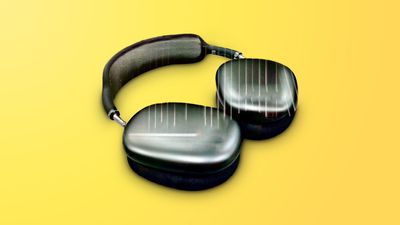
The AirPods Studio will have superior sound quality and Active Noise Cancellation to minimize ambient noise. Other features include equalizer adjustment options available through an iOS device or a Mac, and head and neck detection, which would presumably work like the ear detection in the AirPods but would be able to tell if the headphones are on the head or pulled down onto the neck, pausing content.
An orientation feature may let the AirPods Studio detect the left and right ears for routing audio channels, and there will be no right or wrong side for wearing the headphones.
According to Bloomberg, Apple is working on two designs for the AirPods Studio. One is a higher-end premium model made from high quality materials like leather, while another is more fitness focused and made from breathable, lighter weight materials.
Alleged leaked images of the AirPods Studio show headphones with long oblong ear cups and gray fabric padding at the top of the headband, with the headphones sporting a retro-style look.
Both versions of the AirPods Studio are expected to include magnetic ear cups and headband padding that can be swapped out for a customizable look, similar to Apple Watch bands. There's no solid word on what the AirPods Studio will cost, but rumors have suggested Apple may sell them for around $349.
For more info on the AirPods Studio, check out our AirPods Studio roundup.
Apple Silicon Macs
Apple in June officially announced its work on Arm-based Apple Silicon chips designed for Macs, confirming years of rumors about Apple's transition away from Intel's chips.
![]()
Apple Silicon chips will be similar to the A-series chips used in Apple's iPhones and iPads, with the chips designed in-house by Apple and manufactured by TSMC. Apple Silicon chips will lead to improved performance and more efficient Macs that have deeper integration between hardware and software.
Future Macs will not use Intel's chips, with Apple planning to use its own chips for the entire Mac lineup. The transition to Apple Silicon starts in 2020, and Apple plans to release the first Arm-based Mac before the end of the year.
We don't yet know which Mac will get an Apple Silicon chip first, but there are a few candidates. Rumors suggest Apple is working on a new MacBook Air or a new 12-inch MacBook, so the lower-cost MacBook line could be the first to be updated. It's unlikely we're going to get a new 13-inch MacBook and a revived 12-inch MacBook, so some of the rumors may be confusing one of these machines for another given the similarities.
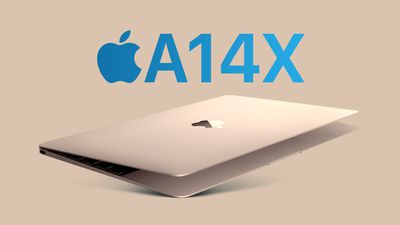
There are also rumors of a new 14-inch MacBook Pro with an Apple Silicon chip and a redesign similar to the 16-inch MacBook Pro, which could come before the end of the year, and there's also a new 24-inch iMac in the works that will replace the 21-inch iMac.
At least one of the Apple Silicon Macs is coming out this year, and it's quite possible we'll hear something the Mac at Apple's October event. Apple does have a couple more months before the end of the year, though, so it's not a sure thing yet, and Bloomberg just recently said that the first Apple Silicon Macs aren't expected until November.
Bloomberg's Mark Gurman believes the first Mac laptop with an Arm-based processor "will emerge at another launch in November," which perhaps suggests a third November event or a launch through a press release.
Event Coverage
Apple will live stream its October 13 event on the Apple Events website, YouTube, and in the Apple TV app on the Apple TV and other platforms.
For those unable to watch, MacRumors will provide live coverage here on MacRumors.com and through our MacRumorsLive Twitter account.






